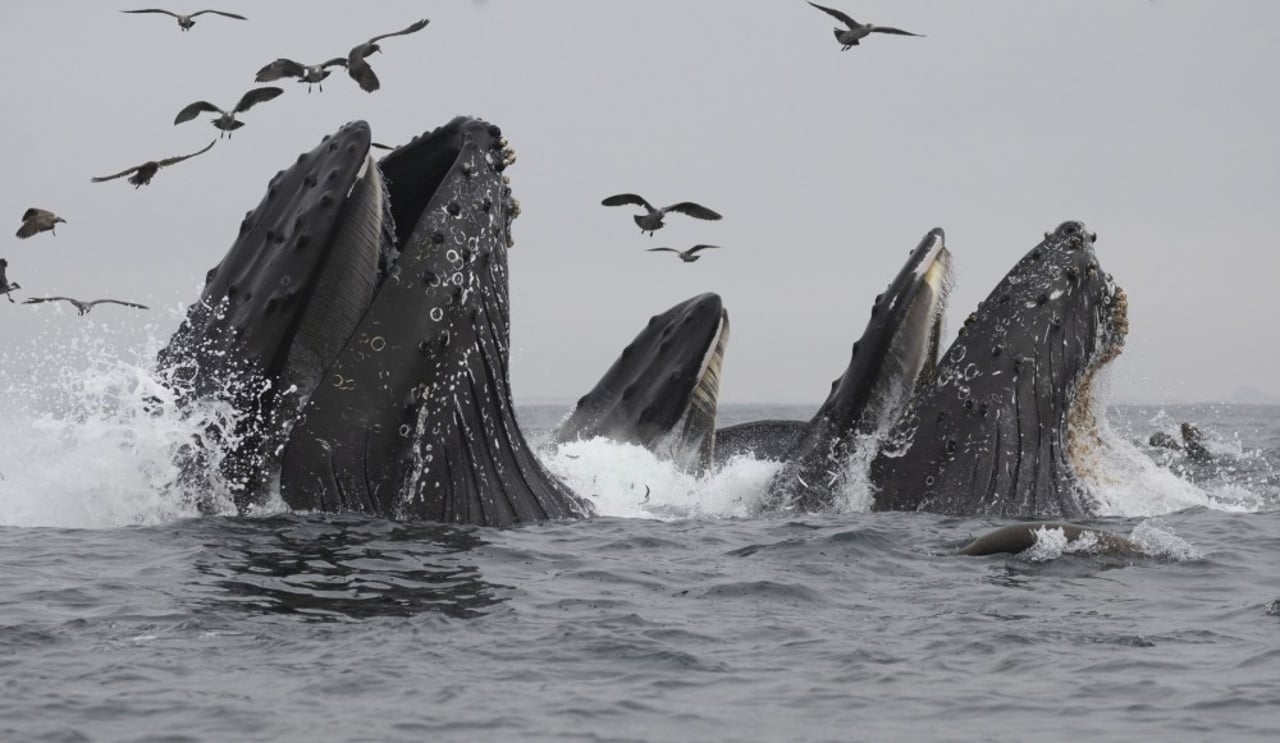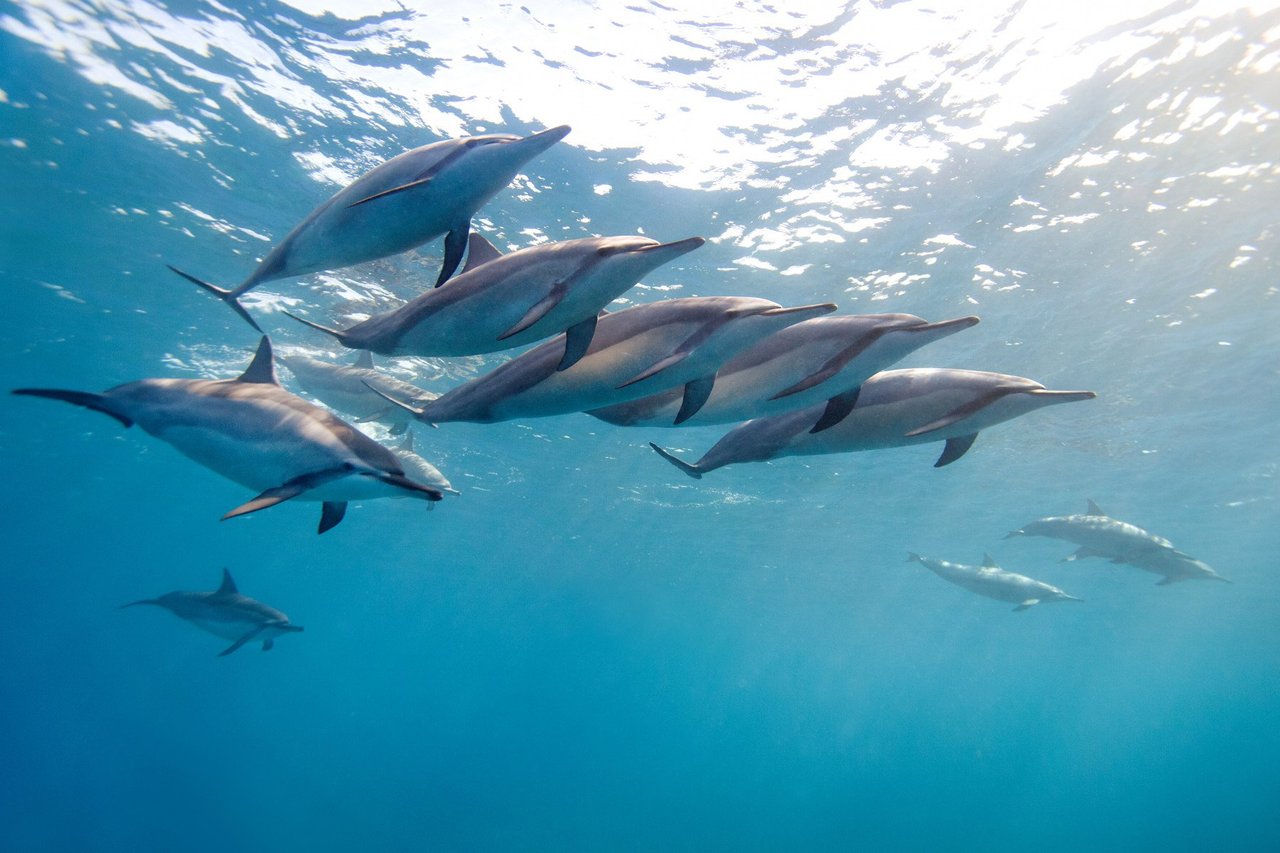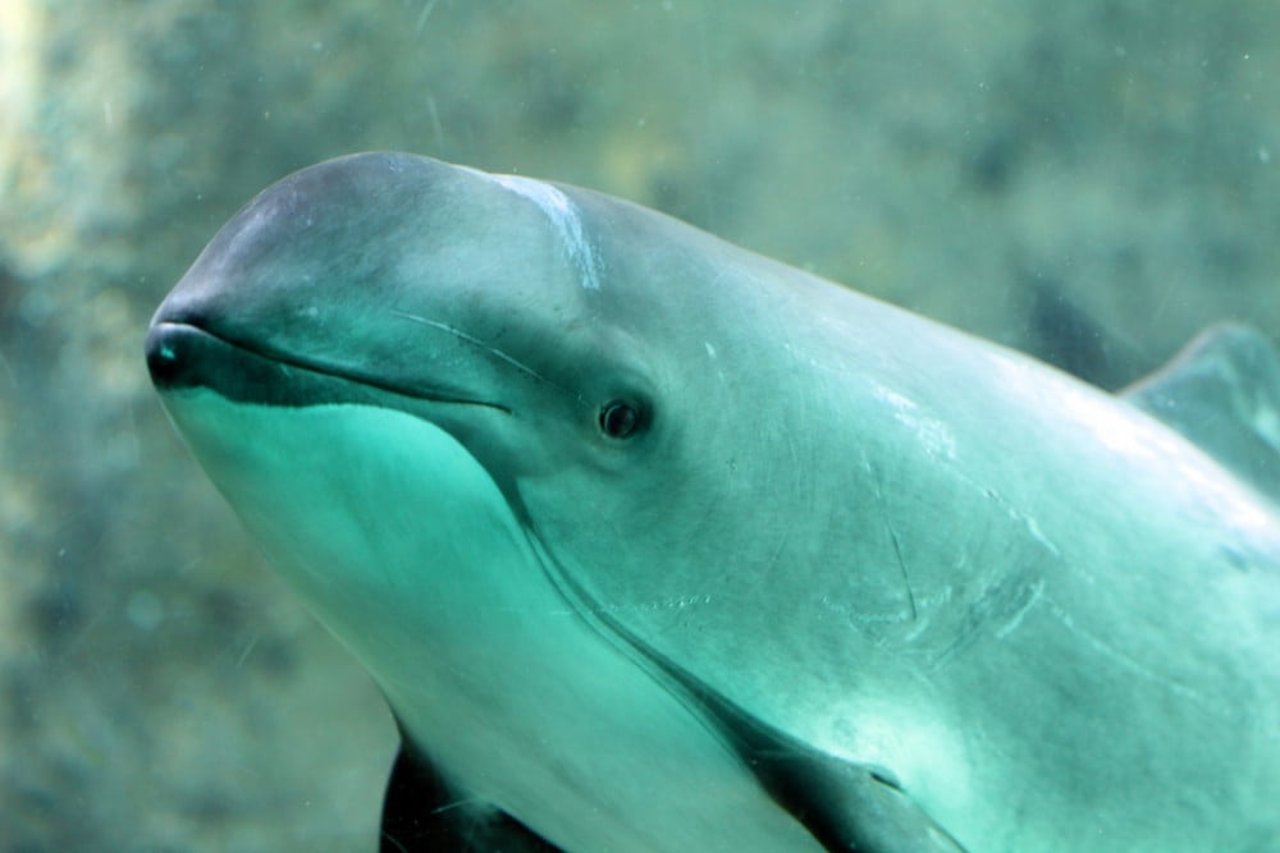
It’s not as simple as you may think.
Have you ever wondered what the difference is between a dolphin and a whale? Have you seen a porpoise and thought, isn’t that a dolphin? In this blog, we’re breaking down the difference between dolphins, whales, and porpoises so you can become more knowledgeable about cetaceans (don’t worry, we’ll also explain what the term “cetacean” means).
In the scientific classification of animals, dolphins, whales, and porpoises belong to the Order Cetacea. “Ceta” is Latin meaning “large sea animal,” and the term “cetacean” refers to any marine mammal under this order. Characteristics include a fully aquatic lifestyle, streamlined body (meaning they have a body shape that reduces resistance when moving), flippers, and tail with a horizontal fin. Scientists have so far discovered over 90 species in the category.
One important note to remember: all cetaceans are mammals, meaning they breathe air.The Order Cetacea is divided into two suborders, Mysticeti (Baleen Whales) and Odontceti (Toothed Whales).
Mysticeti (Baleen Whales)
Whales in this suborder don’t have any teeth! Instead, they have baleen, hair-like plate structures made from keratin (the same protein that forms human hair and nails). To eat, they use their baleen as a filter-feeding system, opening their mouths to take in water and prey then pushing the water out, catching prey behind the baleen. While baleen whales are some of the largest animals in the world, their food sources, which include krill and plankton, are incredibly small. It’s estimated that whales eat up to four tons of krill a day.
Some species that fall under this category are:
- Gray whale
- Humpback whale
- Common minke whale
- Blue whale (also known as the largest animal in the world)
Humpback whales.
Odontceti (Toothed Whales)
Under this suborder, whales have teeth. They also use echolocation—locating objects (such as prey) using sound waves--whereas baleen whales can’t. With echolocation, these whales can hunt no matter how murky the water is. Another distinction is the number of blowholes; baleen whales have two while toothed whales have one.
So where do dolphins and porpoises come in?
Dolphins and porpoises are technically whales since classifications are based on characteristics. Unfortunately, this means names are misleading.
However, within this suborder, there are family categories that differentiate dolphins and porpoises. There are 10 total Families of toothed whales. Five of these are dolphin families and include species such as:
- Common bottlenose dolphin
- Amazon River dolphin
- Spinner dolphin
- Killer whale, also known as orca
Spinner dolphins.
Porpoises fall under a single family and have a few distinct characteristics that differ from dolphins. One of the biggest differences is their face. Dolphins have long snouts (or beaks), whereas porpoises have rounded heads. Porpoises also have a triangular dorsal fin whereas dolphins have more of a curved one. Porpoises are also known to be shy, unlike dolphins who are typically extroverted.
A porpoise.
Curious about beluga whales? They also fall under the toothed whales category but are in another distinct family that also includes narwals.
Interested in learning more about animals, including dolphins? Check out our current campaigns to learn more information on how to help protect dolphins.


